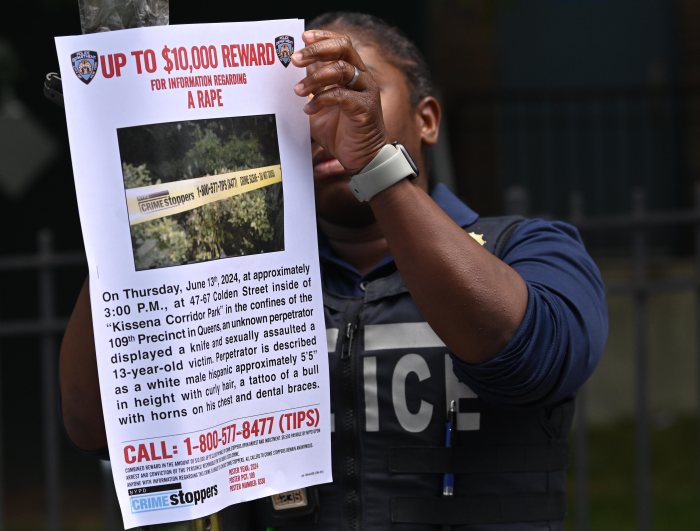Tropical ‘Chik-V’ Causes Fever, Joint Pain
Sen. Charles E. Schumer called on that the Centers for Disease Control and Prevention (CDC) to issue an immediate health alert for medical professionals in New York and around the country that includes recommendations for identifying, treating and containing the Chikungunya virus.
This mosquito-borne bug is rarely fatal but causes severe fevers, arthritic-like joint paint, muscle pain, headaches, joint swelling and rashes for an extended period of time. There are 30 confirmed cases in New York at this point.
Schumer also called on the U.S. Department of Homeland Security (DHS) to declare a “public emergency” for the developing threat in the Caribbean and other countries, so that the United States can deploy specific protocols and resources at our borders and elsewhere to prevent the spread of the virus in the U.S.
The senator said that these protocols would allow federal agencies to take specific actions- such as increased inspections at U.S. ports of entry and additional scans of imported food products that could carry mosquitoes-and should be similar to those activated as the swine flu took hold in Mexico in 2009. Schumer first called on the CDC and DHS to act one month ago, flagging concerns of travelers returning from the World Cup.
“Chikungunya has now officially reached Long Island, and the feds must act before this debilitating virus spreads further and takes hold in New York. There are a number of ways that Chik-V can be treated and contained, and it is critical that the CDC issue a health alert so that doctors can be on the look-out for this virus, better identify and treat symptoms and prevent its spread,” Schumer said. “Also, I am calling on the federal government to help contain and prevent the further spread of this virus on Long Island by activating protocols similar to those used in 2009 when the Mexican swine flu outbreak threatened to spill over into the United States; Department of Homeland Security should increase port of entry inspection measures for the virus, and fourth we must boost food inspection to better detect this mosquito.”
Chikungunya is a virus that is transmitted by mosquitoes and is traditionally found in Sub-Saharan Africa, the Arabian Peninsula and Southeast Asia. Schumer’s initial concerns about this virus came after a surge of Chikungunya cases in the Caribbean that brought the number of cases from 100,000 to 135,651 from June 2 to June 12, according to the Caribbean Public Health Agency.
The number of cases has since worsened significantly. The CDC has been watching the virus, for fear that it could take hold in the United States which is highly likely during the summer tourist season, particularly given the World Cup. However, it is yet to issue a health alert.
Since 2006, the United States has averaged 28 imported cases of Chikungunya per year in travelers returning from countries where the virus is common, according to the CDC. As of July 22, a total of 497 Chikungunya cases have been reported to ArboNET from U.S. states and territories. One hundred ninetyseven locally-transmitted cases have been reported from Florida, Puerto Rico, and the US Virgin Islands. All other cases occurred in travelers returning from affected areas in the Caribbean and South America (N- 295), the Pacific Islands (N-4), or Asia (N-1).
The two mosquito species that can carry Chikungunya are the Aedes aegypti and the Aedes albopictus species, and the former is highly prevalent in Brazil at this time. The virus is transmitted from mosquitoes to individual, but not between individuals directly. The mosquitoes responsible for this virus are generally found in warmer and wetter conditions, but unlike more common mosquito species, these mosquitoes thrive during the day time and can be found in urban areas.
Chikungunya is associated with high fevers that last between three and five days, headaches and extreme joint pain, similar to arthritis. There is no vaccine for the virus, but palliative treatment exists to alleviate severe pain, and there are measures that can be taken to help prevent further spread once an individual is infected.



































